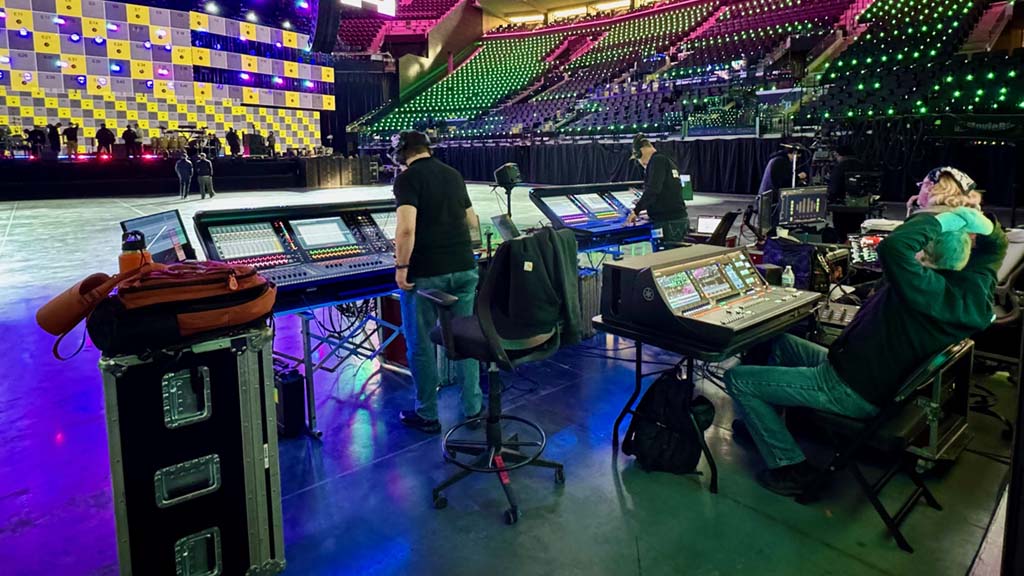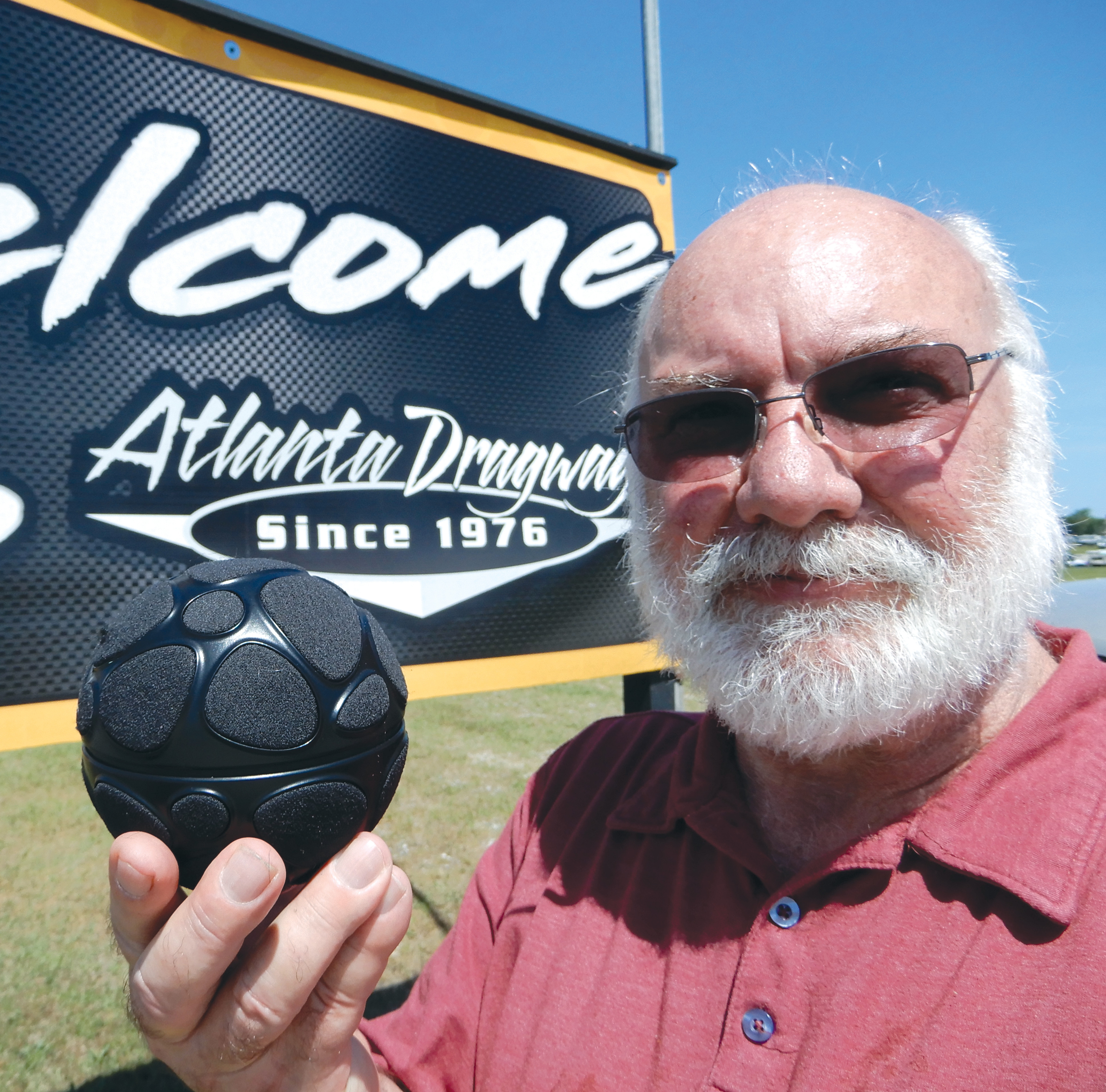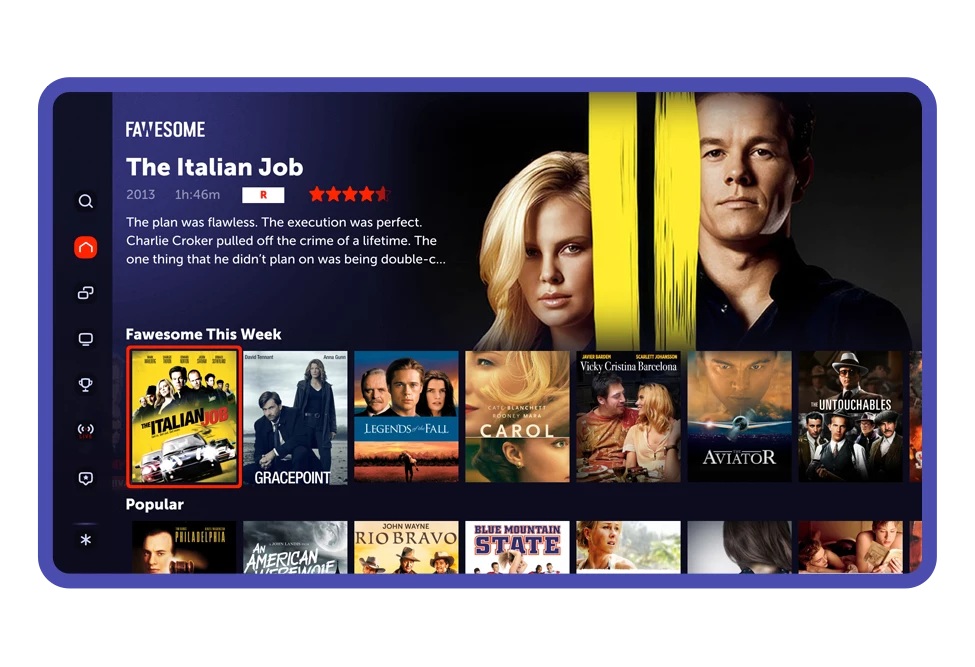Really Big Shows
The audio path from Ed Sullivan to FireAid

I remember being glued to the television set every Sunday night to hear Ed Sullivan say, “We have a really big show.” Those were really big shows for audio. The stage changes for “The Ed Sullivan Show” were managed from stacks of analog radio and PA mixers feeding microphones and audio signals into each other. A musical act, standup, puppets, animals and with Ed in front of a live audience, it sounded pretty good. The crew moved microphones around, made chalk marks on the audio mixer, unplugged and plugged in equipment and prayed that there were no failures or miss-patches.
With “The Ed Sullivan Show” (aka “Toast of the Town”) there was only one musical act with basic instruments, but the future of big television shows has resoundingly come to mean big musical productions. Possibly 1985 was the year that stretched the analog resources almost to the breaking point with live broadcast music productions from Farm Aid and Live Aid, but help was on the way. By 1987, the audio world saw the commercial release of digital mixing consoles.
Instant Recall
Complex changes in signal flow and processing are easily possible with digital consoles because of the ability to instantly recall a flow or setting. It is hard to imagine any music awards show without the luxury of being able to retrieve an entire audio production from a rehearsal or sound check or even the drum sound from the studio.
Shows like Farm Aid and Live Aid had weeks of planning, but a recent music production accomplished a large-scale event with just a few days. The FireAid benefit concert, an event supporting the victims of the recent L.A. fires, had 30 different artists, each with a seven minute change-over goal between acts. There were over 300 audio channels available and each act had a sound check during the couple of days before the event. The “soundcheck” was stored and recalled across four identical DiGiCo mixing desks for the day of the show.
Large-scale commercial audio mixers with more than 48 channels were not available until the early ’70s and those extra audio channels required more electronics and physical space. Overweight equipment and miles of copper wire were not good for the developmental days of outside broadcast and it cannot be understated that digital technology has made possible the really big audio extravaganzas like the Super Bowl, music, awards and live performance talent shows.
Hundreds of audio channels are available in a manageable frame size because of the concept of shared space and the use of virtual layers under a single control surface. For example, a single channel strip with a volume fader and controls for equalization and dynamics could be designed/ programmed to control as many channels below the top surface as the processing power (DSP) would allow. This means a top layer of 36 channels doubles to 72 by adding another layer and jumps to 108 with a third layer all contained in the same frame. It is not uncommon to see four- and eight-layers deep for 288 channels. For reference, a 36-fader mixing desk would be about 4 to 5 feet wide.
Channel density was a game-changer, but to me, one of the most significant contributions from digital mixing consoles to high-fidelity sound was that you can insert dynamic range options (compressor/limiter) into any section of the gain stage. In the ‘80s, I worked on a CBS OB van that had three compressor/limiters: basically one for the announcers, one for effects and one for replays. This clearly presented a compromise in settings, particularly with three announcers. Current digital technology allows each audio source to have dynamic range controls making for a much-smoother-sounding show.
Have We Peaked?
Finally, the utility aspects of digitized audio can not be overstated. What used to take thousands of feet and hundreds of pounds of copper wire now uses a few strands of fiber. Even though the contribution of digital audio to the audio practitioner is nothing short of a miracle, digital technology significantly reduced the operating cost of a production by reducing the weight to transport and the time needed for pulling cable and engineering setup.
Consider this: Perhaps broadcasting technology has peaked with its complete transformation from analog to digital! Perhaps the future of the big broadcast experience is producing big sounding entertainment and content.
That’s not hard—the fastest, most consistent way to a big sound is through digital electronic manipulation of the audio. For example, a little reverb, delay and processing go a long way toward creating sonic space and interest. I am all for electronic up-processing of audio, which, by the way, gained acceptance by broadcasters in the early days of stereo and was used by NBC to enhance the entire stereo production of the 1988 Summer Olympics. Even recently, Fox Sports upconverted/processed its Super Bowl LIX production to 4K and Dolby Atmos.
Digital audio allows for instantaneous changing and sculpting of the sonic qualities of a sound mix, including dynamic spatialization. Digital technology offers the benefits of a creative audio pallet to create sonic Nirvana—however the generative process.
Spend a little time on the sonic qualities of your mix. A great-sounding show gets attention, someone is listening.
Get the TV Tech Newsletter
The professional video industry's #1 source for news, trends and product and tech information. Sign up below.
Dennis Baxter has spent over 35 years in live broadcasting contributing to hundreds of live events including sound design for nine Olympic Games. He has earned multiple Emmy Awards and is the author of “A Practical Guide to Television Sound Engineering,” published in both English and Chinese. His current book about immersive sound practices and production will be available in 2022. He can be reached at dbaxter@dennisbaxtersound.com or at www.dennisbaxtersound.com.

